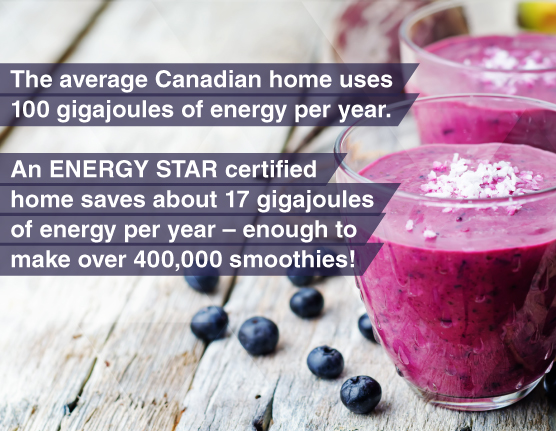Sustainable and efficient homes and buildings
In the future, buildings will use and generate clean electricity. Efficient homes and buildings are comfortable, healthy, and more affordable. They stay the right temperature and are less drafty; saving Canadians money on their energy bills. Improving our homes and buildings will also create new construction jobs and push Canadian businesses to innovate.
The Pan-Canadian Framework on Clean Growth and Climate Change will reduce emissions and drive innovation by providing the tools to make new buildings more energy efficient; developing a retrofit code for existing buildings; ensuring that furnaces and other appliances meet new efficiency standards, and supporting building codes and energy efficiency housing in Indigenous communities.
Learn more about sustainable homes and buildings
Transcript
The Government of Canada is taking action …
We are greening building codes for new homes …
Making it easier to retrofit your home and business …
We are making new appliances more energy efficient…
For you, this means lower energy bills …
And for Canada? ..
It means more innovation and the creation of up to 100,000 new middle class jobs by 2030.
It’s how we’re building a clean, sustainable future.

What success will look like
Amani
Amani wants to save money on energy to heat her home and help the environment. She can replace her drafty windows, insulate her attic and replace her furnace to lower her energy bill over time. She can also make sure that she hires contractors who follow the latest environmentally friendly building codes. She saves money and feels good knowing she’s helping Canada build a clean, sustainable future.
Key facts and figures
- Buildings produce 17% of Canada’s greenhouse gases, including emissions from generating electricity that buildings use. A large part of this is from using fossil fuels to heat and cool our buildings.
- 40% of emissions from electricity generation is for energy used in our buildings.
- Measures to promote energy efficiency could create up to 100,000 new jobs by 2030.
- An ENERGY STAR certified clothes dryer uses 20% less energy, on average, than a regular model. Save twice by pairing it with an ENERGY STAR certified clothes washer.
- The average Canadian home uses about 100 gigajoules of energy per year. An ENERGY STAR certified home saves approximately 17 gigajoules of energy per year. This is equivalent to the energy used in:
- Running a refrigerator for 10 years
- Toasting 51,000 bagels
- Washing 1,700 loads of laundry
